2000 AD Covers Uncovered Extra: Stewart K. Moore on Surfer, Defoe, Macbeth, pitching, and why failure is a good thing sometimes
23rd August 2023
Every week, 2000 AD brings you the galaxy’s greatest artwork and 2000 AD Covers Uncovered takes you behind-the-scenes with the headline artists responsible for our top cover art – join bloggers Richard Bruton and Pete Wells as they uncover the greatest covers from 2000 AD!
Except this isn’t a Covers Uncovered, not really. That came yesterday with Stewart K. Moore‘s in-depth and quite brilliant look at the cover to Surfer, the new John Wagner and Colin MacNeil collection – an absolute thriller of a Dreddworld tale.
No, today we have the second part of Stewart’s look into the creative process, something he described as ‘On Surfer and the artistic long game, pitch fails and successes and the pitching process for 2000AD.‘ Yesterday we did Surfer and some of the artistic long game. So today is more about the artistic long game, about pitch fails and successes, and about Stewart’s experiences with the pitching process for 2000 AD.
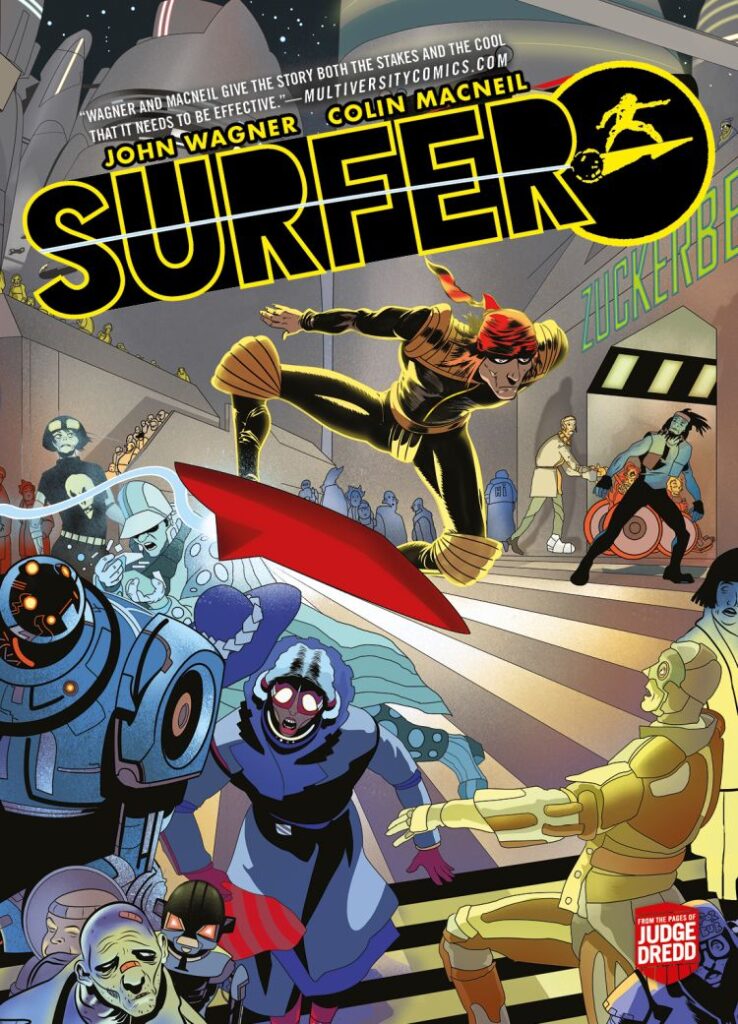
Despite dipping into comics in the ’90s, Moore only really got serious about it when he returned to the medium in 2012, beginning the slow work on Project MKUltra: Sex, Drugs & the CIA, which finally came out from Clover Press in 2021 and has a collection coming in October 2023. The Tragedie of Macbeth came next, self-published in limited numbers in 2016 and now coming out from Clover Press. After this, Moore worked with David Lloyd‘s digital comic anthology Aces Weekly to produce The Boötes Void and Thrawn Janet, an adaptation of R.L. Stevenson’s short story.
And finally, after a few attempts that you’ll hear all about, he came to 2000 AD‘s attention, working with Pat Mills on Defoe: The Divisor, which saw print in Progs 2150-2161 (2019), to give us a stunning rendition of this clockpunk alternate past where the undead are kept at bay by zombie hunters like Titus Defoe. And of course, since then, we’ve been seeing his art regularly on covers, pin-ups, special projects such as The 2000 AD Encyclopedia, and Judge Dredd strips.
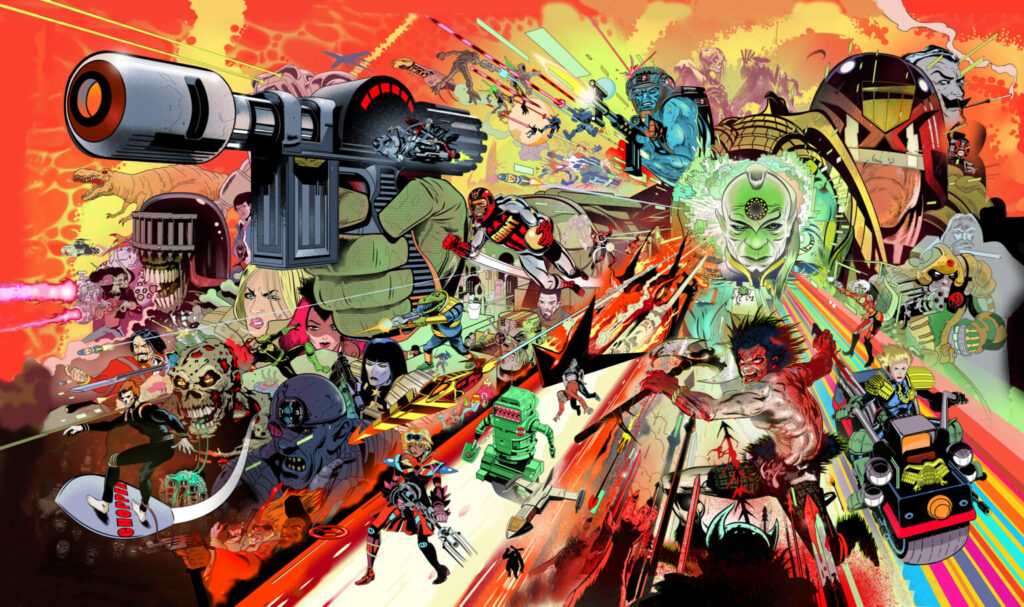
So, here we go, a deeper dive into the artist’s head, featuring thoughts on creating, disappointment, failure, the Defoe pitches that eventually led to Stewart’s work with Pat Mills, and the genesis of his latest book, The Tragedie of Macbeth, originally self-published but now brought to a wider audience by Clover Press and based on his drawings of Prague Shakespeare Company’s adaptation of Shakespeare’s masterpiece.
But to start, let’s go back to a few things Stewart mentioned as part of his Covers Uncovered for Surfer, where he was telling us about the artist’s problem of seeing the thing they want to achieve and then invariably failing to get there…
STEWART K. MOORE: I failed to draw an 89-page graphic novel in one week, damn it….it took four weeks, but I’ll get to that in a minute.
[For the Surfer cover] I put in some incredible hours, but I didn’t get what I wanted. So it’s a bit of a heartbreaker this one. It’s not like anything else. I think that’s a success of sorts.
But ultimately it didn’t go where I sensed it could, it only got so far.
The trouble with art is we artists can see and feel it right away, but showing others takes many hours of work. Those who can’t imagine what we see can then see it in an instant and can imagine it in an instant, although they had no idea just a moment before. I can still see it and feel it and I’m sorry I can’t show you it, this is as close I could get in that blistering heat.
Maybe next time.
The Surfer cover wasn’t a failure but sometimes you do fail and hard.
Don’t despair, keep those things around in a drawer, you never know. My first pitch for Defoe failed hard.
And here, thanks to Stewart, is that first pitch for Defoe…
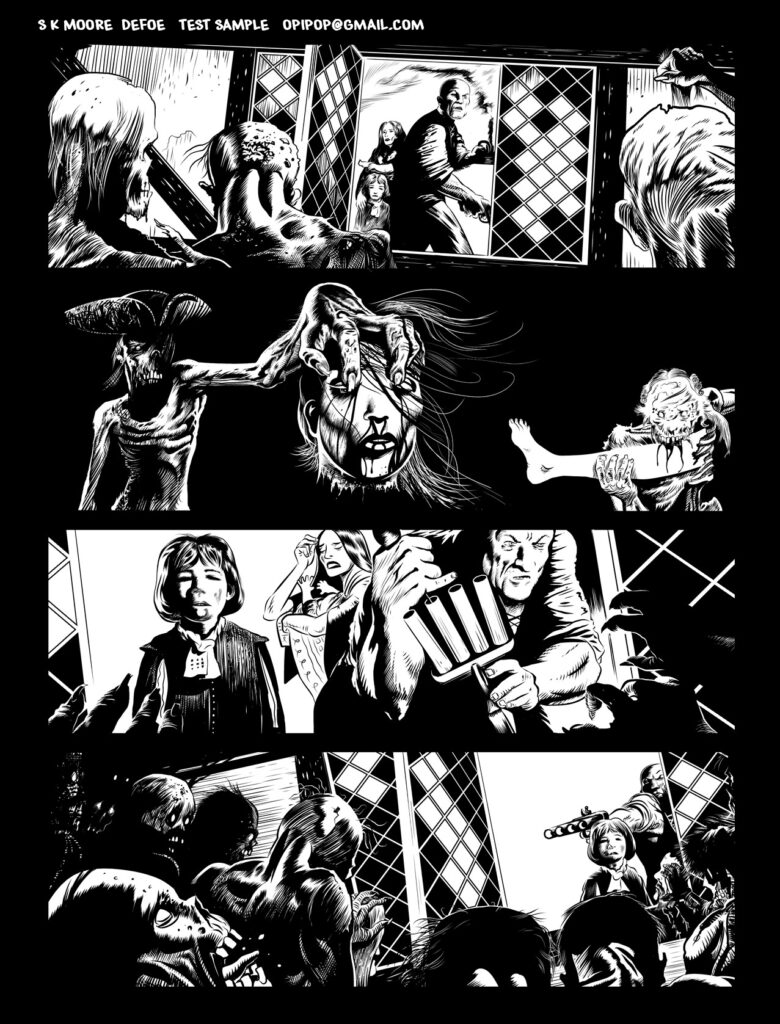
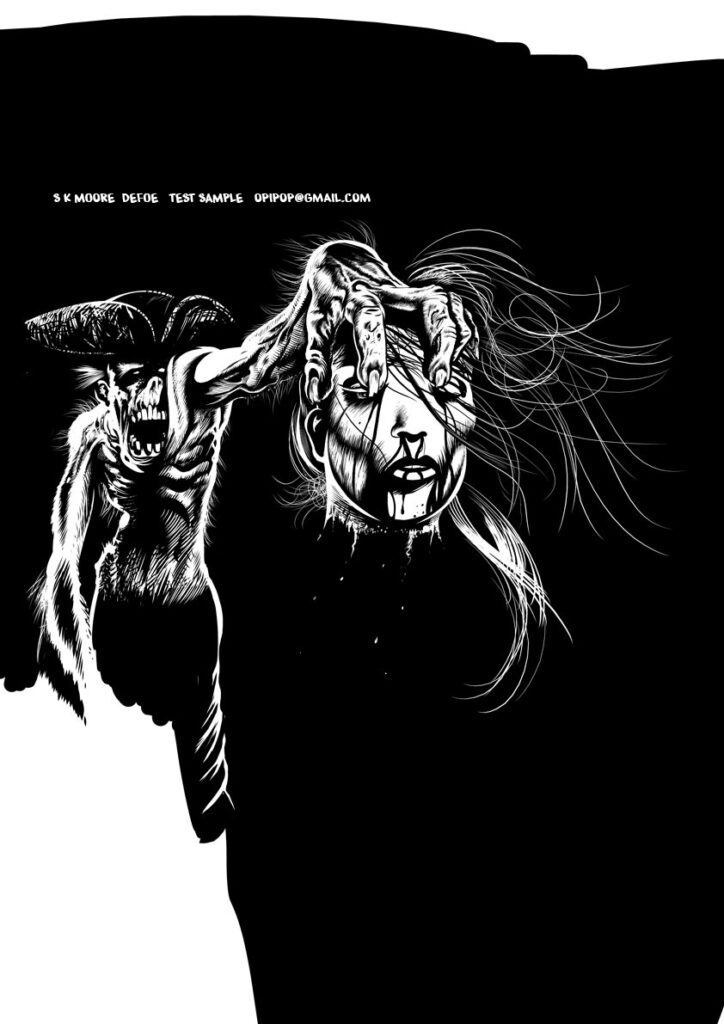
>
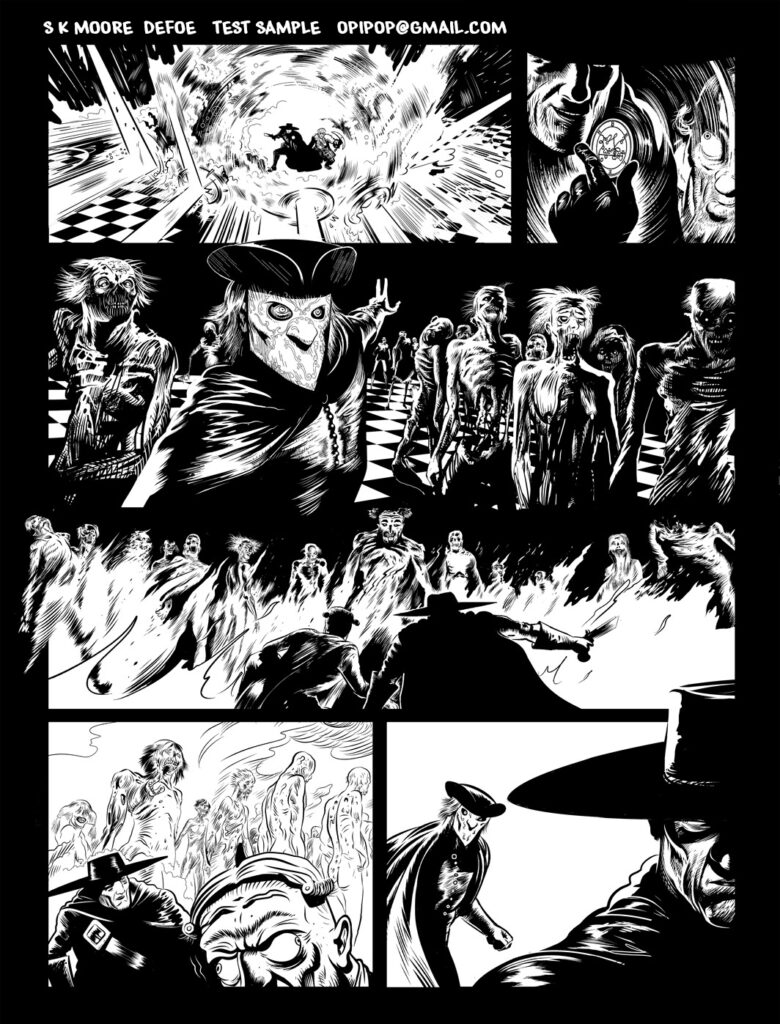
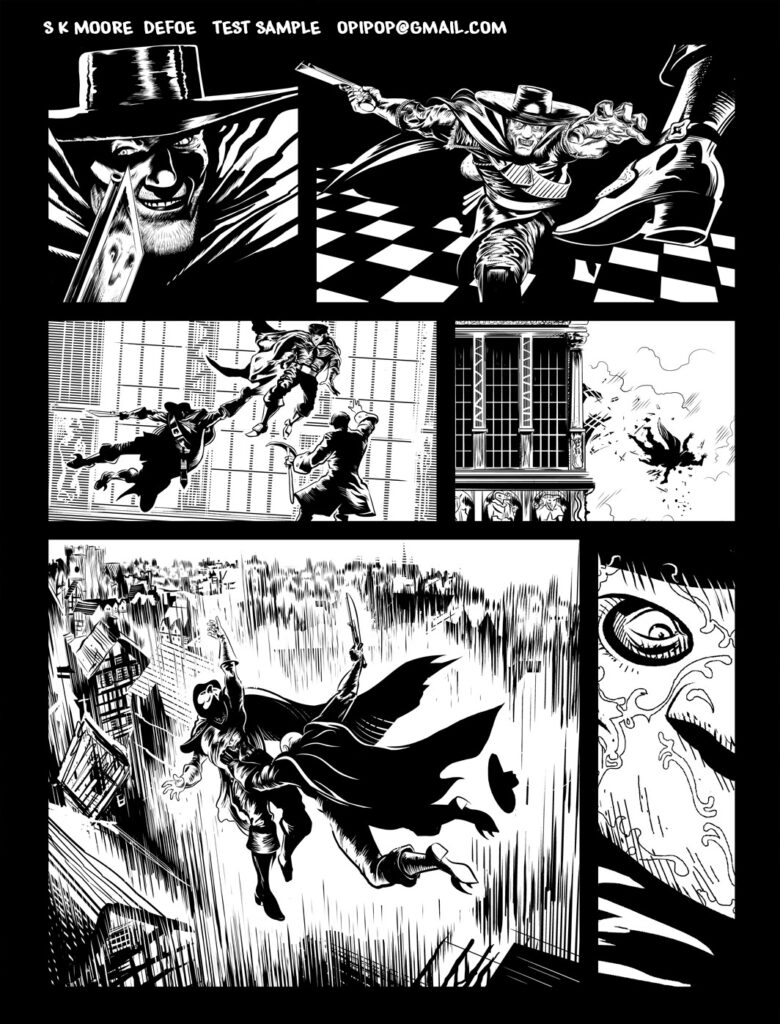
>
SKM: Pitching is a tricky thing to discuss, the editor makes a judgement call based on certain things that are unknowable. Even a halfway decent pitch can get rejected by unknowables, for example, maybe the editor already has a hunch a spectacular artist like Colin McNeil would be interested, it’s just not clear. I advise artists to be self-motivated and not wait for pitch acceptance and try not to take rejection personally. But it’s not easy.
When I thought of adapting Macbeth to comics [which came out as a self-published comic in 2016], the prospect of a detailed work, like my last pitch, made me feel sick.
I wanted to paint it in oils (and still want to do a fully oil-painted comic – call me!), but it was the primal work of Louis le Brocquy that sprang to mind when I considered Macbeth, as a book, and it was Pat Mills that told me about it.
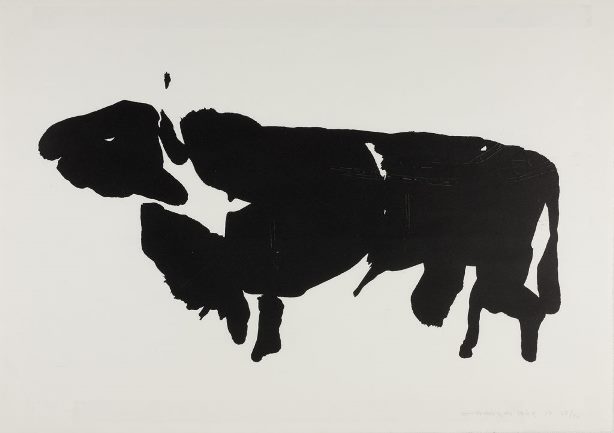
I think Pat saw an exhibition of Le Brocquy’s prints based on the Irish myth of The Táin [or Táin Bó Cúailnge, sometimes known as The Cattle Raid of Cooley, an epic of Irish mythology].
When he read up on Irish mythology a terrifying warrior leapt into his imagination, a greater transformative mythic hulk than The Hulk and a greater warrior than Conan – this was Sláine MacRoth!
The primitivist style of the le Brocquoy art gave me the impetus to drop all the detailed inking I’d just laboured over for my failed Defoe pitch and try something new for The Tragedies of Macbeth.
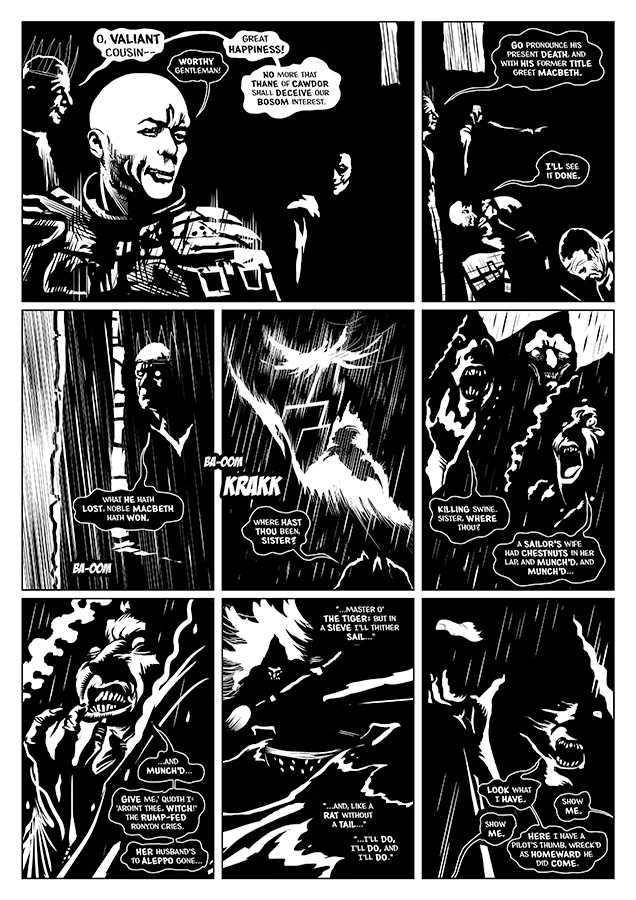
I stripped the story back to its simplest shapes and gave myself a strict 5 minutes to assess, after each page was done. After that I was not allowed to touch it!
I was drawing 6 pages a day and aimed to have a graphic novel in 7 days. I failed, it took 28. That’s one moon cycle, which is apt for a story about witches. I self-published 120 copies and sold 9 to Gosh Comics (they’re great supporters of the small press!).
That was 2015 or so and this month it came out, from Clover Press, as a definitive new graphic novel.

>
In 2017 I started adapting Thrawn Janet and went back to detail, this time aiming for a classic horror style reminiscent of Hammer films of the 1960’s.
This was published in Aces Weekly, the greatest digital anthology comic out there. Aces’ editor-in-chief is none other than David Lloyd of V for Vendetta fame.
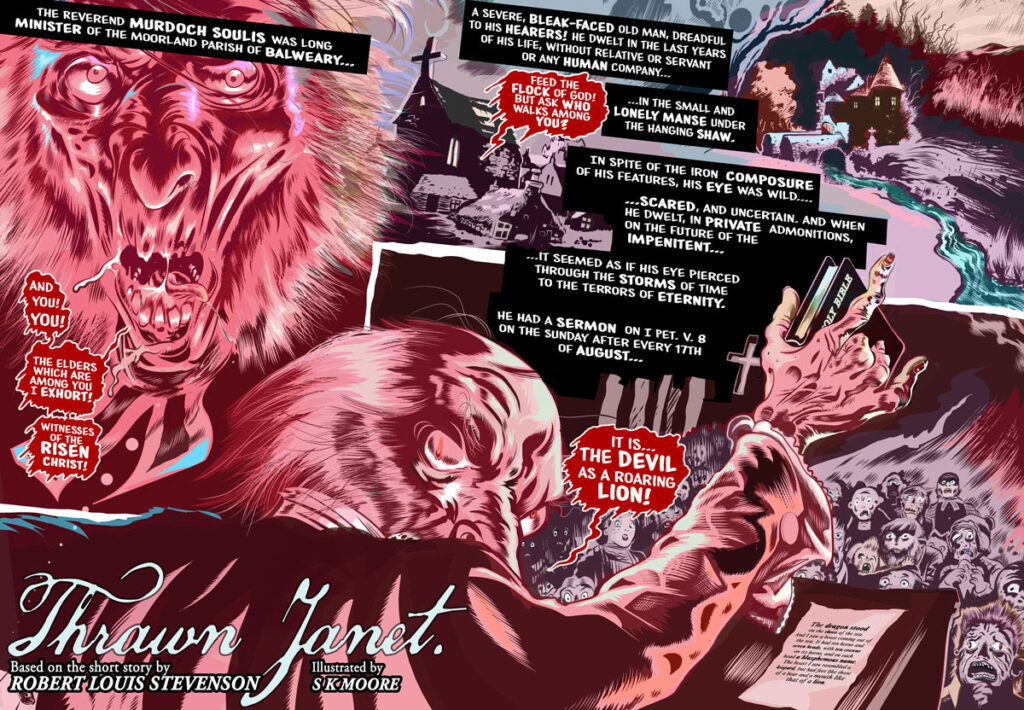
I sent a few to Pat and he liked them enough to send them in as a possible creative direction, I was soon working on yet another pitch test for a new Defoe story – The Divisor.
This pitch took two months, can you believe that? Based on old material from a previous Defoe story that I’ve yet to see. I was waiting for a tram when I got the text from Pat, the art had passed the test and the game was afoot! (a rotten Reeks foot and the hardest project of my career!).
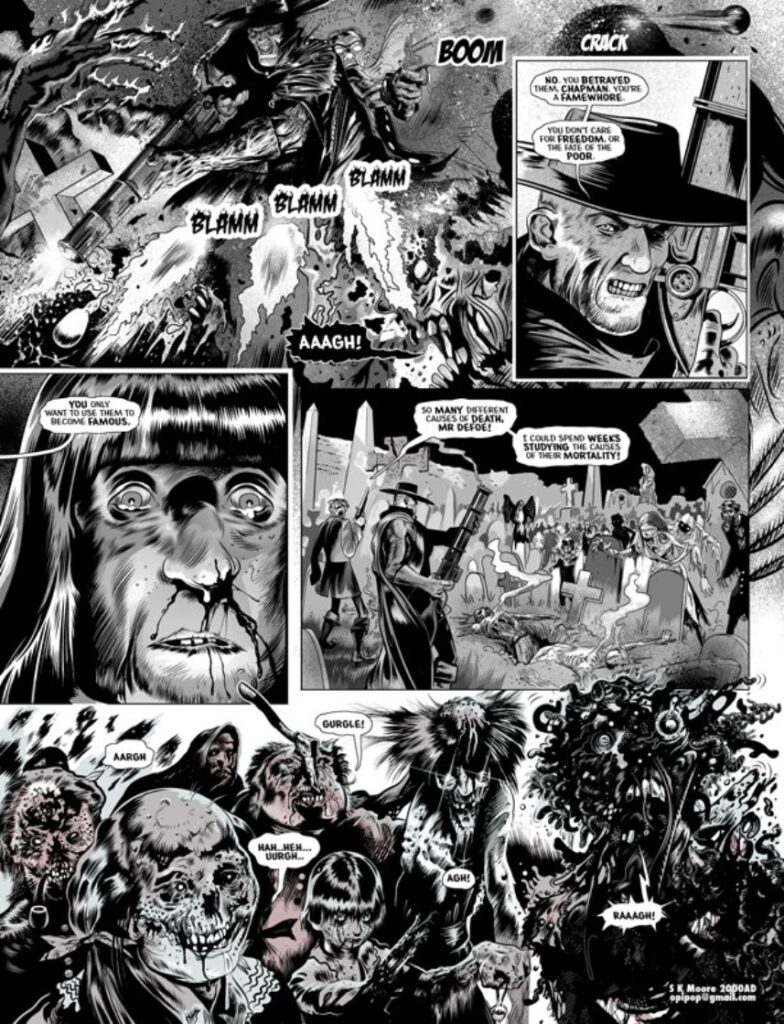
>
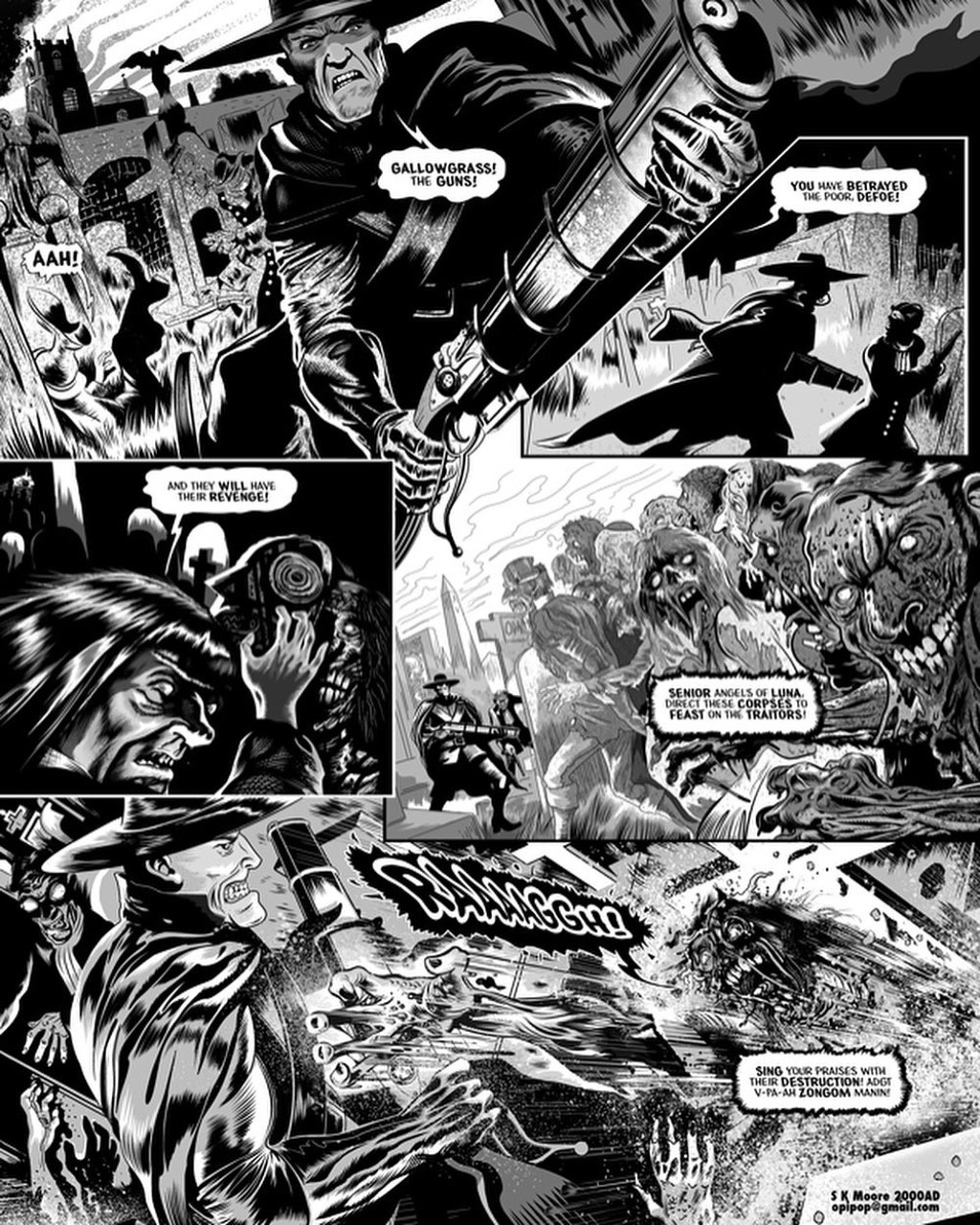
If you are lucky a great style will emerge from you. I envy that, it didn’t happen for me. So I follow my stylistic whims as they come to me. I’m still looking for my Dredd-world style, It’s close, I can feel it.
Stick in artist, trust yourself, plough on Macduff!
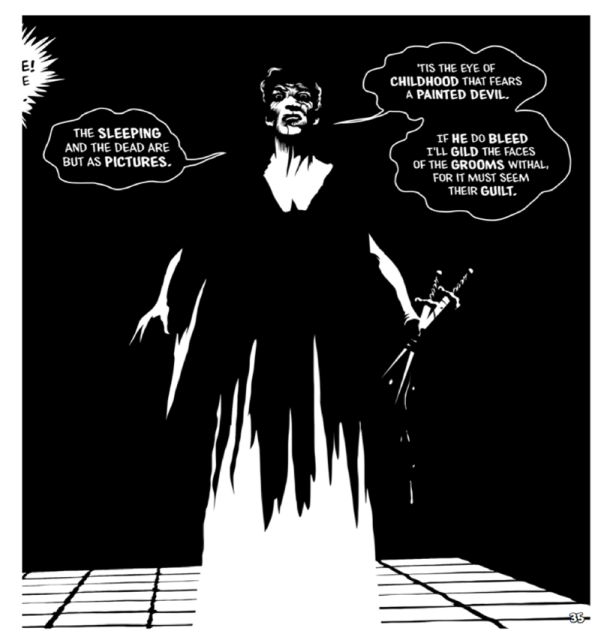

I have a signing for Macbeth coming up at Gosh Comics 1 Berwick Street, London on Saturday 30th September from 1 to 2 pm.
Bring your copy of Surfer or any of my 2000 AD work along and I’ll be delighted to sign them. I will be bringing many sketches and drawings from my work on Judge Dredd and cover art too.
I will be signing any and all 2000 AD comics and books that I have worked on and I will stay and sign until everybody has their book signed. I’ll draw a free sketch of the dead King Macbeth in all my copies.

Thank you once more to Stewart for yet another fascinating dive into the creative process – it’s something all prospective artists should bear in mind – keep trying, keep failing, it makes you better, it gets you ready to get the job you want, get the art you want.
Remember, you can find the first part of this extended look at the artistic process from Stewart with his Covers Uncovered for Surfer here. You can (and should) pick up Surfer from all great comic shops and the 2000 AD web shop right now.
As for more stuff from Stewart, there’s plenty we’ve already published for you – including Covers Uncovered pieces for The 2000 AD Encyclopaedia, Prog 2179, Prog 2239, Prog 2340, Megazine 440, 2020 Sci-Fi Special poster, plus an interview about his Judge Dredd: Ascension Day strip here and an interview about Defoe: The Divisor here.
For Stewart’s other work, find and follow him on Twitter and Instagram, read his bio here at Lambiek, and buy all his works including his amazing adaptation of The Tragedie Of Macbeth that you’ve been reading about and the stunning MK-Ultra: Sex, Drugs & The CIA, all about the shadowy world of government conspiracies and covert ops. The MK Ultra complete collection comes out in Sept 2023 from Clover Press.
And, like he says, he’ll be appearing at Gosh Comics in London on Saturday 30th September between 1 and 2pm for a signing for The Tragedie Of Macbeth.
Yes, bring your 2000 AD stuff for signing and sketching but be sure to pick up a copy of Macbeth as well, it’s such a great book – based on his drawings of Prague Shakespeare Company’s adaptation of Shakespeare’s masterpiece. He documents the stage performance in Prague and illustrates it against the ‘starkest memories, places and myths of his own homeland.’ It’s a really stunning adaptation of the play, with Stewart’s use of the comics page and storytelling pacing making this a perfect adaptation of the play.
Here’s a nice pic of him in front of his work in Gosh, just so you know who you’re looking for…

